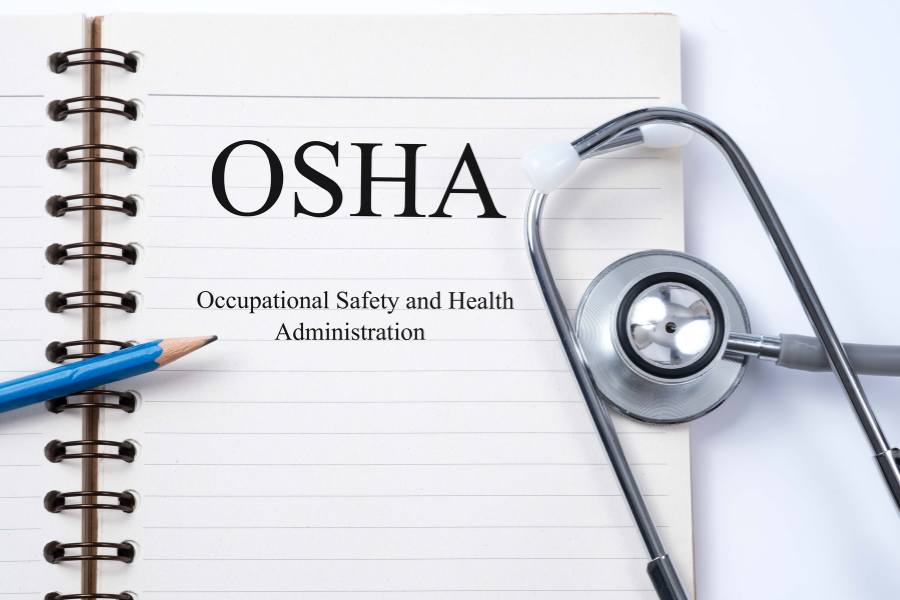The Occupational Safety and Health Administration (OSHA) is responsible for ensuring the safety and well-being of workers across the United States. One of the agency’s most effective tools is annual inspections that identify and address hazards and risks.
OSHA’s mandate is to ensure that employers maintain a workplace free from hazards that cause or are likely to cause physical harm to employees. These OSHA inspection requirements apply to all workplaces, including warehouses, and aim to create safe working environments.
How often does OSHA inspect?
All worksites can expect an OSHA inspection at least once every year. These inspections occur during work hours so inspectors can witness the worksite’s daily routines. OSHA standard 1960.25(c) states: “All areas and operations of each workplace, including office operations, shall be inspected at least annually. More frequent inspections shall be conducted in all workplaces where there is an increased risk of accident, injury or illness due to the nature of the work performed. Sufficient unannounced inspections and unannounced follow-up inspections should be conducted by the agency to ensure the identification and abatement of hazardous conditions.”
Does OSHA do random inspections?
Yes, typically the annual OSHA inspection is random and could occur at any time throughout the year. However, even if a business has already experienced an annual inspection, there are events, such as an accident or suspicion of imminent danger, that can prompt additional inspections. Some examples that could trigger more frequent OSHA job site inspections include:
- High-hazard industries and workplaces with high injury or illness rates.
- OSHA receiving an employee complaint about hazards or violations.
- An incident that involves the death or the hospitalization of three or more employees.
- OSHA suspecting a workplace hazard that could lead to a serious injury or death.
Who can conduct OSHA inspections?
OSHA inspections are performed by experts trained in health and safety regulations, known as compliance officers. These are the professionals who conduct annual inspections in all workplaces, including warehouses.
How are OSHA inspections conducted?
While every inspection is unique, there is a general outline to an OSHA inspection:
- Opening conference: During an OSHA inspection what happens first is the inspectors inform the employers about the purpose, scope and procedures of the inspection.
- Walkaround inspection: Next, inspectors walk through the workplace, inspecting all work areas for potential hazards.
- Employee interviews: Employees may be questioned about workplace conditions, safety practices and any concerns or complaints they may have.
- Records review: Inspectors then review all documents relevant to the inspection, such as safety plans, training records and injury logs.
- Closing conference: After the inspection, a closing conference is held to discuss the findings.
- Citations and penalties: If hazards or violations are identified, OSHA may issue citations and penalties.
During the inspection, employers can request that certain information be treated as a trade secret and not disclosed to the public. However, this does not exempt them from correcting any hazards connected to those trade secrets. Employers are also encouraged to discuss the investigation’s findings, proposed penalties and corrective actions during the closing conference.
What happens during an OSHA inspection?
The walkaround portion of an OSHA inspection typically involves several stages. During an OSHA inspection, the compliance officer evaluates many aspects of a workplace, including:
- Physical conditions: This includes the overall state of the facility, the condition of equipment and the presence of hazards like blocked exits, inadequate lighting or faulty machinery.
- Machine guarding: The compliance officer will check that all machinery and equipment have proper guarding devices installed to prevent employee injuries.
- Ergonomics: Compliance officers may evaluate workstations to identify ergonomic issues that could lead to musculoskeletal disorders.
- Chemical exposure: If employees regularly handle hazardous substances, the compliance officer will check that appropriate protective measures, such as personal protective equipment and proper labeling, are being followed.
- Documentation: Employers are required to maintain records related to safety and health, and the compliance officer will review these documents to verify compliance with OSHA regulations.
Throughout the inspection, employers are encouraged to actively participate and address any concerns raised by the compliance officer. This collaborative approach fosters a better understanding of potential issues and allows for prompt corrective actions.
How long is an OSHA inspection?
An OSHA inspection process can take up to several weeks. The duration of an inspection varies based on the size and complexity of the workplace, as well as the nature of the hazards identified. While some inspections are completed in a day, others may last days or even weeks. The time it takes is influenced by the:
- Size of the workplace: Larger facilities with more employees and complex operations may require an extended inspection period.
- Nature of the hazards: If the compliance officer identifies serious hazards that require immediate attention, additional time may be necessary.
- Cooperation from the employer: Employers who actively cooperate and promptly address concerns raised during the inspection can speed up the process.
- Documentation review: The volume of records reviewed is a significant factor.
Truthfully, what’s more important than how often does OSHA inspect is being ready for an OSHA inspection anytime. As long as your worksite operates safely and productively, you should not experience too many complications during an OSHA inspection. Speaking of safety and productivity, do you know if your forklift batteries are operating at their peak performance? If not, let our complimentary forklift fleet performance analysis provide the answers you need. Please give us a call at (888) 316-2459 or fill out this form to begin a service request and discover how Texas Motive Solutions can improve your forklift fleet’s efficiency.



